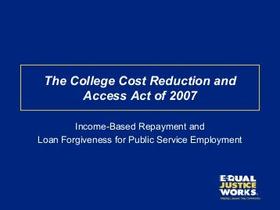How Much Does Community College Really Cost in 2025?
Choosing community college is a smart move for many families—especially with rising costs of four-year institutions. This core guide offers a complete, parent-friendly breakdown of what to expect in 2025.
Introduction
Community college often stands out as an affordable and flexible route to higher education. But “affordable” can be misleading—costs extend beyond tuition to include fees, books, housing, and daily living. This guide helps parents anticipate the full financial picture in 2025, backed by current data, financial aid insights, and planning advice.
1. What Does Tuition Actually Look Like in 2025?
National Averages
Public community colleges:
In-state tuition averages $5,099/year
Out-of-state: $8,784/year (Community College Review)
Other estimates put tuition and fees for in-district students around $3,780/year, with total cost of attendance averaging $11,884 (Education Data Initiative).
For 2024–25, one report gives an average of $4,050 for tuition and fees, which constitutes just 20% of total student budgets (Center for American Progress).
Regional Variation
Lowest tuition states (per College Board, 2024–25):
California: ~$1,440
New Mexico: ~$2,220 (research.collegeboard.org)
This shows dramatic variability—depending on location, tuition costs may differ by thousands annually.
2. More Than Just Tuition: Full Cost of Attendance (COA)
Beyond tuition, families need to budget for books, supplies, housing, transportation, and personal expenses.
A breakdown for 2024–25 indicates:
Tuition & Fees: 20%
Housing & Food: 51%
Other (including transportation, books): 29% (Center for American Progress)
For a specific example—Central Community College (NE)—the 2025–26 COA for a resident student living on campus is:
Tuition & Fees: $3,450
Living expenses: $9,362
Books & Supplies: $826
Personal: $1,422
Transportation: $1,286
Total: $16,346 (cccneb.edu)
3. What About Financial Aid?
Financial aid significantly reduces the net cost—and many students receive enough aid to cover tuition entirely.
55% of community college students receive financial aid (Education Data Initiative)
36% receive federal grants; within that, 29% are Pell Grants (Education Data Initiative)
As of 2024–25, first-time, full-time in-district students at public two-year colleges often pay net tuition of zero or lower, after grant aid (Center for American Progress)
Approximately 61% of community college graduates leave without student loan debt (Education Data Initiative)
4. How Does Community College Compare to Four-Year Institutions?
Public in-state four-year tuition (2024–25 average) is around $9,750 (Education Data Initiative)
Community college tuition represents about 35% of that cost (aacc.nche.edu)
Complete COA differences are even wider—community college can cost a fraction compared to $27,000+ annual cost for four-year public universities (Education Data Initiative, BestColleges.com)
5. Long-Tail Queries & Parent Questions
How can I budget accurately for community college in 2025?
Include these in your planning:
Tuition & fees (state and local differences)
Books & supplies (~5–10% of budget)
Housing (especially if you plan to live on or off campus)
Transportation & personal expenses
Factor in financial aid (grants, scholarships, maybe work-study)
Will in-district tuition be fully covered by aid?
Quite possibly—many first-time, full-time in-district students see tuition costs eliminated through grants (Center for American Progress)
What states offer free community college?
As of late 2024, 15 states offer tuition-free programs regardless of income—for two to four years (New York Post)
Any emerging policy updates?
In Massachusetts, the Senate proposed "MassEducate" (as of May 2024) to create tuition-free community college for residents plus a stipend, though negotiations are still underway (AP News)
Conclusion & Takeaways
Tuition is affordable, but not negligible. In-state rates average $5,000/year, but costs vary widely.
Total cost of attendance matters. Budget several thousand dollars beyond tuition—housing, textbooks, transportation.
Financial aid transforms the equation. Grants and state programs often cover full in-district tuition.
Regional differences matter. Some states offer near-free community college; others remain comparatively expensive.
Plan proactively. Consider net cost, aid options, living arrangements, and local policies to build a realistic budget.
For related insights, see our Community College Profiles and read our article on Financial Aid Strategies for Parents.















